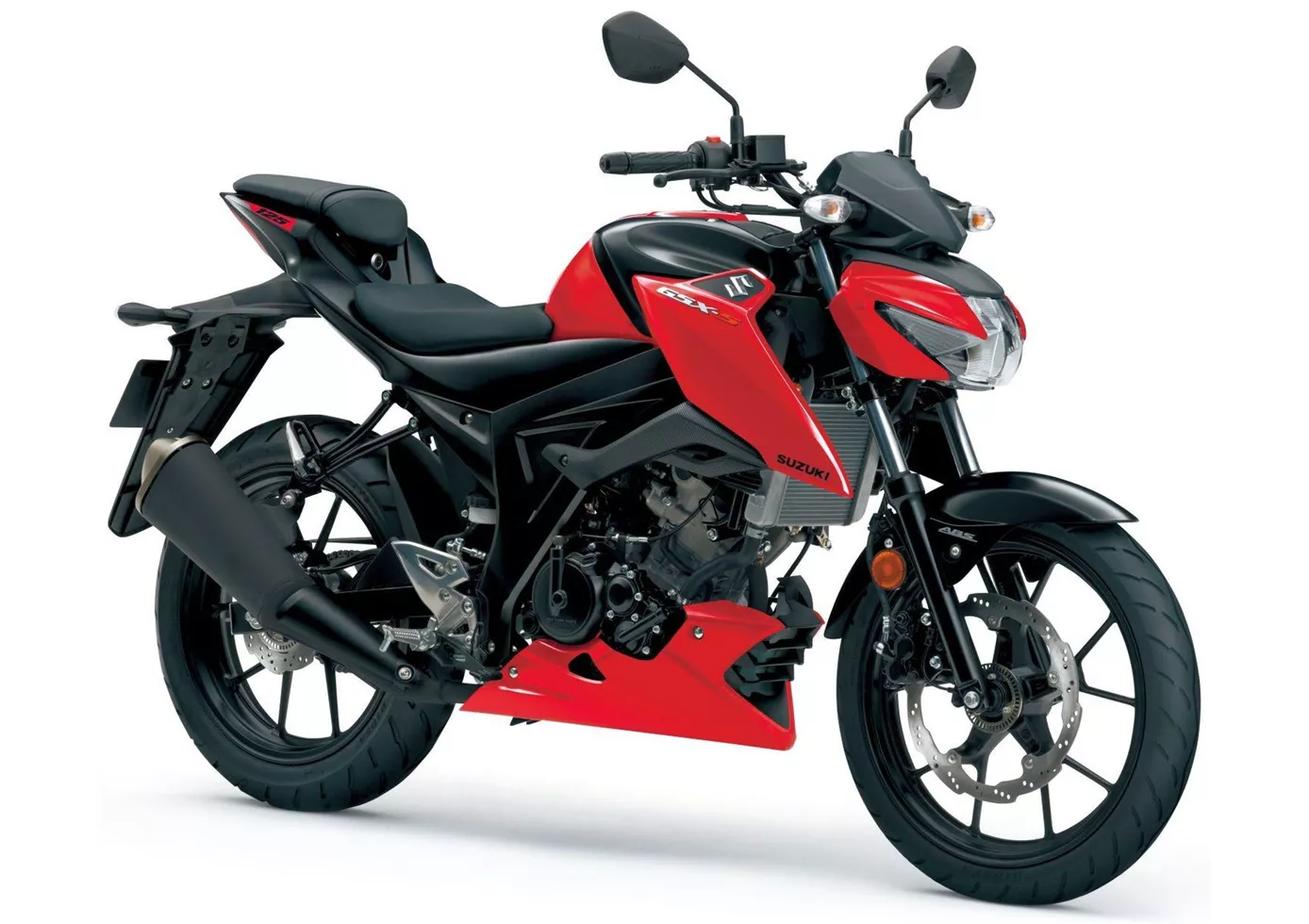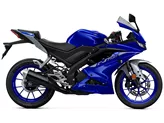Yamaha MT-125 2020 vs. Suzuki GSX-S125 2017

Yamaha MT-125 2020

Suzuki GSX-S125 2017
Vue d’ensemble - Yamaha MT-125 2020 vs Suzuki GSX-S125 2017
When comparing the Yamaha MT-125 2020 and the Suzuki GSX-S125 2017, it is clear that both bikes have similar specifications in terms of engine power, cylinders, and cooling system. They both produce 15 horsepower and have a liquid cooling system. However, there are some notable differences between the two models.
In terms of engine displacement, the Yamaha MT-125 has a slightly larger engine with a displacement of 124.7ccm, while the Suzuki GSX-S125 has a displacement of 124ccm. This small difference may not have a significant impact on overall performance, but it is worth noting.
Both bikes feature a telescopic fork front suspension and a steel frame. However, the Yamaha MT-125 has a Deltabox frame type, while the Suzuki GSX-S125 has a central tube frame type. The choice of frame type can affect the overall handling and stability of the bike, but it ultimately comes down to personal preference.
When it comes to braking, both bikes have a single disc front brake. However, there is a difference in the front tire width. The Yamaha MT-125 has a wider front tire with a width of 100mm, while the Suzuki GSX-S125 has a front tire width of 90mm. This may have a slight impact on the bike's handling and grip.

Yamaha MT-125 2020
In terms of dimensions and weights, the Yamaha MT-125 has a slightly longer wheelbase of 1355mm compared to the Suzuki GSX-S125's 1300mm. The seat height of the Yamaha MT-125 is also slightly higher at 810mm, while the Suzuki GSX-S125 has a seat height of 785mm. Additionally, the Yamaha MT-125 has a slightly higher kerb weight of 138kg compared to the Suzuki GSX-S125's 133kg. These differences in dimensions and weights may affect the bike's maneuverability and comfort, but again, it depends on the rider's preferences.
Both bikes have a fuel tank capacity of around 11 liters, which is relatively standard for this class of motorcycles.
Moving on to the strengths of each model, the Yamaha MT-125 2020 is praised for its sporty and comfortable ride, thanks to its good chassis. It is also considered versatile, making it suitable for various riding conditions.

Suzuki GSX-S125 2017
On the other hand, the Suzuki GSX-S125 2017 is known for its low weight, which contributes to strong acceleration for its 15 horsepower. It has a top speed of 125 km/h and is even capable of performing wheelies. The bike also features LED headlights and an informative display, adding to its appeal.
However, both models have their weaknesses. The Yamaha MT-125 lacks LED turn signals, which may be seen as a drawback for some riders. Additionally, the sitting position of the Yamaha MT-125 may take some getting used to, as the upper body is tilted forwards.
The Suzuki GSX-S125, on the other hand, could benefit from stronger brakes and more front wheel feel, according to some riders.
In conclusion, while both the Yamaha MT-125 2020 and the Suzuki GSX-S125 2017 have similar engine specifications, they have some notable differences in terms of frame type, tire width, dimensions, and weights. Each model has its strengths and weaknesses, and the choice between the two ultimately depends on the rider's preferences and priorities.
Caractéristiques techniques Yamaha MT-125 2020 par rapport à Suzuki GSX-S125 2017
Avantages et inconvénients en comparaison
Avantages et inconvénients en comparaison
Yamaha MT-125 2020

La Yamaha MT 125 est une naked bike élégante mais aussi sportive, qui délivre beaucoup de puissance, surtout à bas régime. La position d'assise droite et la bonne maniabilité complètent la MT. Les inconvénients sont toutefois l'absence de clignotants LED et le fait que l'on dépasse le compteur de vitesse en penchant le torse vers l'avant.
Suzuki GSX-S125 2017

La Suzuki GSX-S125 a l'air plus adulte que la GSX-R125 de construction identique. Elle est construite un peu plus large autour du réservoir et n'a pas non plus besoin de carénage pour une vitesse maximale d'environ 120 km/h. Techniquement, elle est identique à la GSX-R, mais elle est plus amusante grâce à son guidon plus haut et plus large et à sa position de conduite plus droite. Un wheelie se fait assez facilement, on peut donc volontiers renoncer à quelques km/h de vitesse de pointe.
Comparaison des prix Prix moyen du marché Yamaha MT-125 vs Suzuki GSX-S125
There are a few key differences between a Yamaha MT-125 2020 and a Suzuki GSX-S125 2017. There are the same number of bikes of both models available on the 1000PS.de marketplace, specifically 10. It takes less time to sell a Yamaha MT-125 with 49 days compared to 300 days for a Suzuki GSX-S125. Since model year 2014 1000PS.de editors have written 18 reviews for the Yamaha MT-125 and 8 reviews for the Suzuki GSX-S125 since model year 2017. The first review for the Yamaha MT-125 was published on 5/15/2014 and now has more than 48,700 views. This compares to more than 17,400 views for the first review on Suzuki GSX-S125 published on 11/8/2016.















